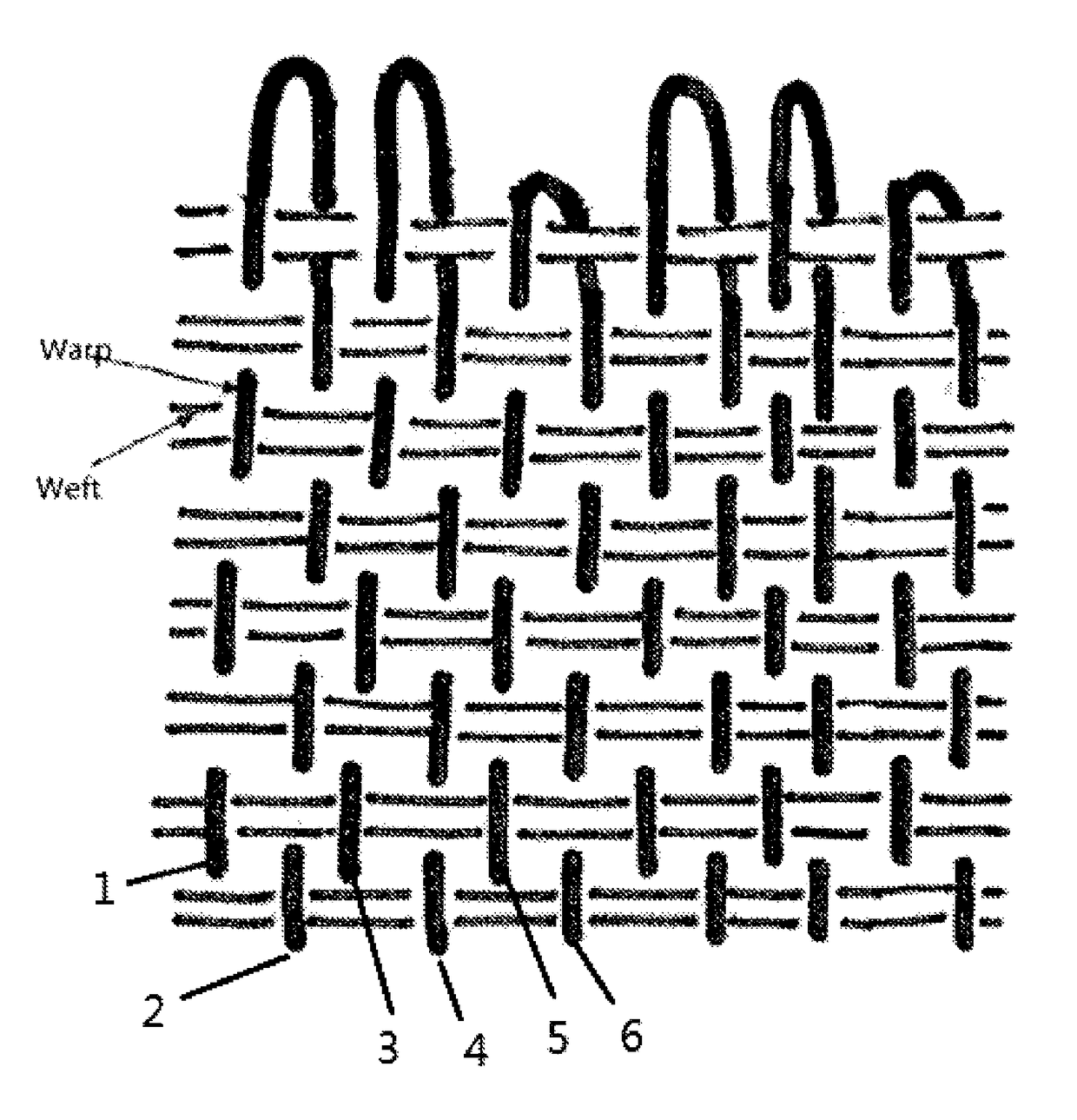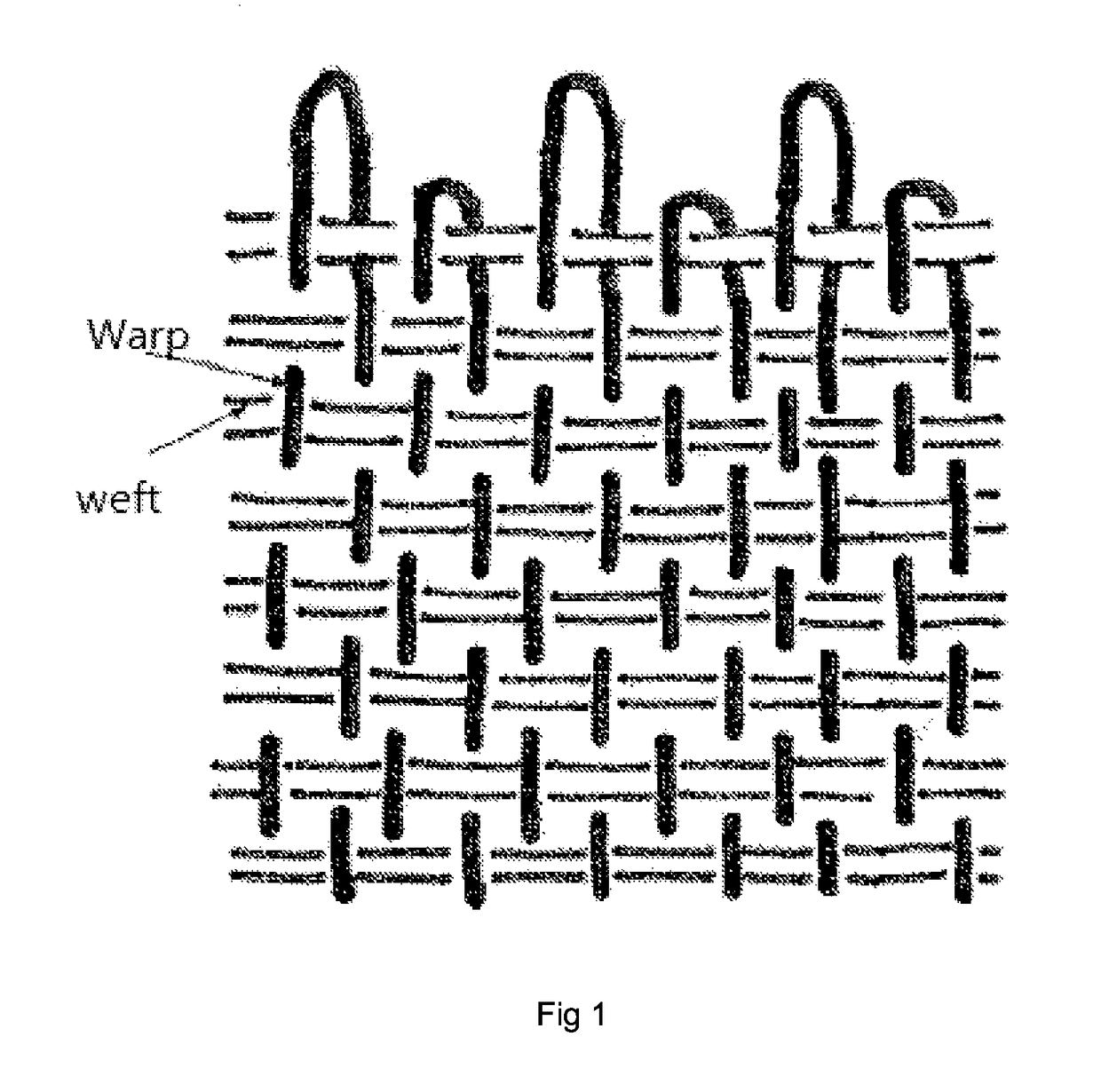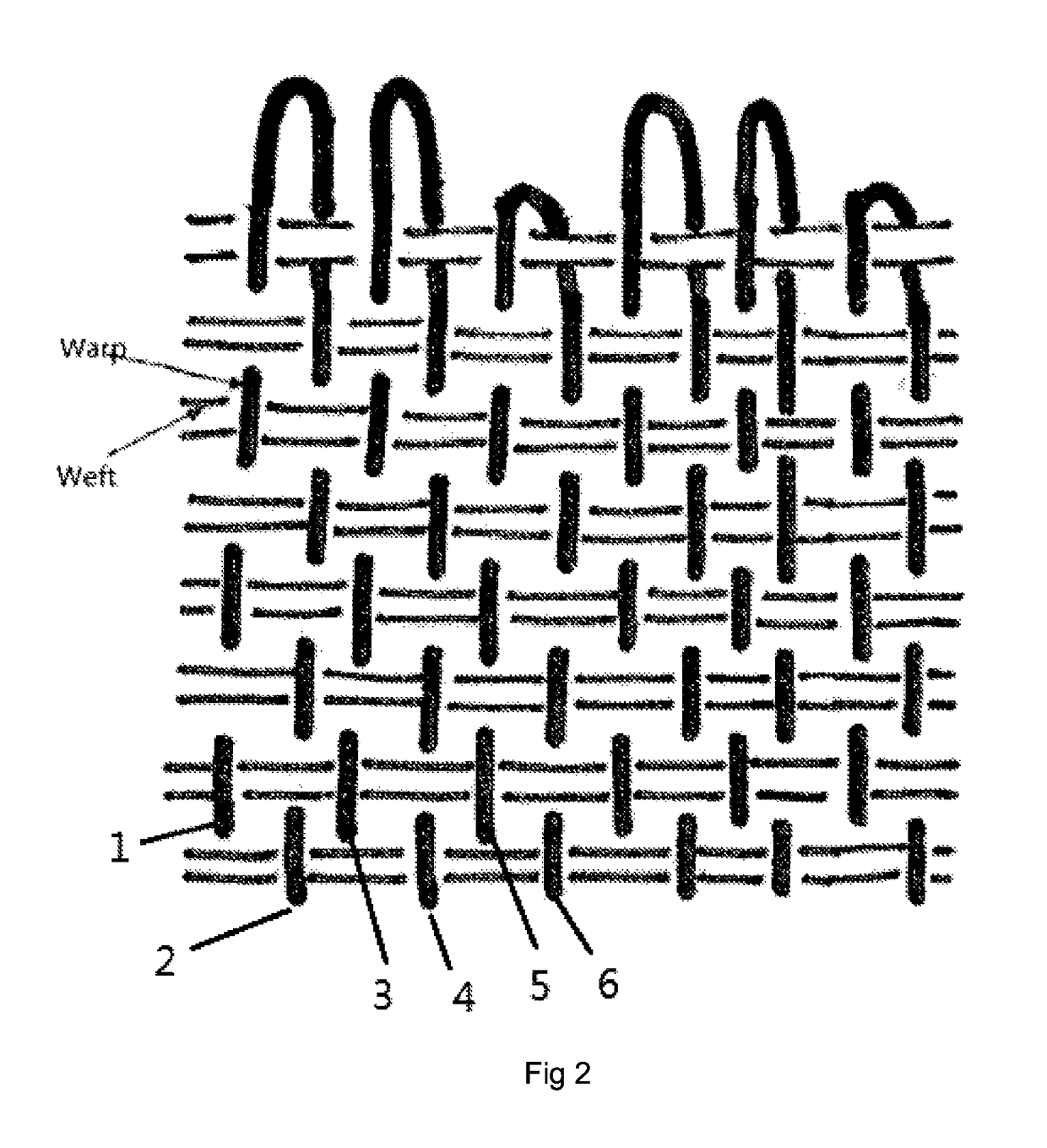Papermaking fabric with double loop seam
a papermaking fabric and double loop technology, applied in papermaking, textiles and papermaking, wet end of machine, etc., can solve the problems of increasing hydraulic marking, increase seam strength, etc., and achieve the effect of increasing seam abrasion resistance, increasing seam strength, and increasing the number of seam loops
- Summary
- Abstract
- Description
- Claims
- Application Information
AI Technical Summary
Benefits of technology
Problems solved by technology
Method used
Image
Examples
embodiment 1
[0038]A papermaking fabric comprising a woven fabric body having opposing ends, said fabric body having a system of MD-yarns interwoven with a system of CD yarns; wherein the fabric has a single layer weave construction; wherein the said MD-yarns comprising first pairs of MD-yarns, second pairs of MD-yarns and third pairs of MD-yarns; wherein said first pairs, second pairs and third pairs MD-yarns are interwoven with said CD yarns in a repeat weave pattern; wherein each of said first and second pairs form seaming loops at widthwise edges of said fabric. The said first pairs, second pairs and third pairs MD-yarns are arranged in a sequence, such that the said second pairs of MD-yarns are adjacent to the said first pairs of MD-yarns, and the said third pairs of MD-yarns are adjacent to the said second pairs of MD-yarns. The first pairs of MD-yarns including first MD-yarns1 folded back and second MD-yarns2 in alignment and substantial abutment with said first MD-yarns to form a first g...
embodiment 2
[0039]A papermaking fabric comprising a woven fabric body having opposing ends, said fabric body having a system of MD-yarns interwoven with a system of CD yarns; wherein the fabric has a single layer weave construction; wherein the said MD-yarns comprising first pairs of MD-yarns, second pairs of MD-yarns and third pairs of MD-yarns; wherein said first pairs, second pairs and third pairs MD-yarns are interwoven with said CD yarns in a repeat weave pattern; wherein each of said first and second pairs form seaming loops at widthwise edges of said fabric. The said first pairs, second pairs and third pairs MD-yarns are arranged in a sequence, such that the said second pairs of MD-yarns are adjacent to the said first pairs of MD-yarns, and the said third pairs of MD-yarns are adjacent to the said second pairs of MD-yarns. The first pairs of MD-yarns including first MD-yarns1 folded back and second MD-yarns2 in alignment and substantial abutment with said first MD-yarns to form a first g...
embodiment 3
[0040]A papermaking fabric comprising a woven fabric body having opposing ends, said fabric body having a system of MD-yarns interwoven with a system of CD yarns; wherein the fabric has a single layer weave construction; wherein the said MD-yarns comprising first pairs of MD-yarns, second pairs of MD-yarns and third pairs of MD-yarns; wherein said first pairs, second pairs and third pairs MD-yarns are interwoven with said CD yarns in a repeat weave pattern; wherein each of said first and second pairs form seaming loops at widthwise edges of said fabric. The said first pairs, second pairs and third pairs MD-yarns are arranged in a sequence, such that the said second pairs of MD-yarns are adjacent to the said first pairs of MD-yarns, and the said third pairs of MD-yarns are adjacent to the said second pairs of MD-yarns. The first pairs of MD-yarns including first MD-yarns1 folded back and second MD-yarns2 in alignment and substantial abutment with said first MD-yarns to form a first g...
PUM
 Login to View More
Login to View More Abstract
Description
Claims
Application Information
 Login to View More
Login to View More - R&D
- Intellectual Property
- Life Sciences
- Materials
- Tech Scout
- Unparalleled Data Quality
- Higher Quality Content
- 60% Fewer Hallucinations
Browse by: Latest US Patents, China's latest patents, Technical Efficacy Thesaurus, Application Domain, Technology Topic, Popular Technical Reports.
© 2025 PatSnap. All rights reserved.Legal|Privacy policy|Modern Slavery Act Transparency Statement|Sitemap|About US| Contact US: help@patsnap.com



